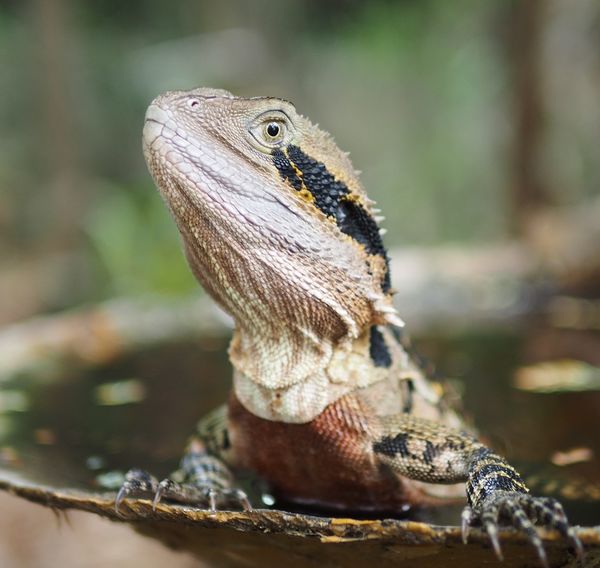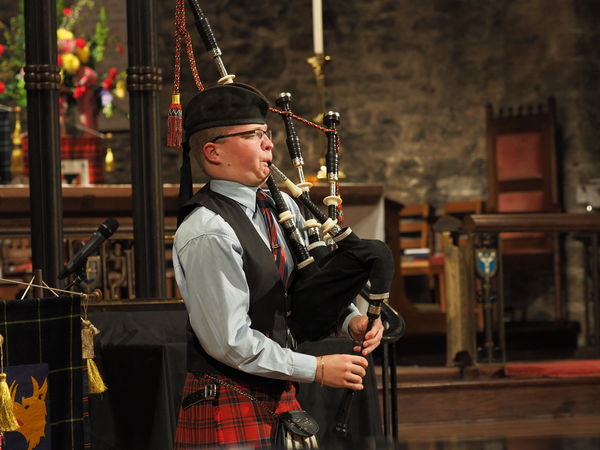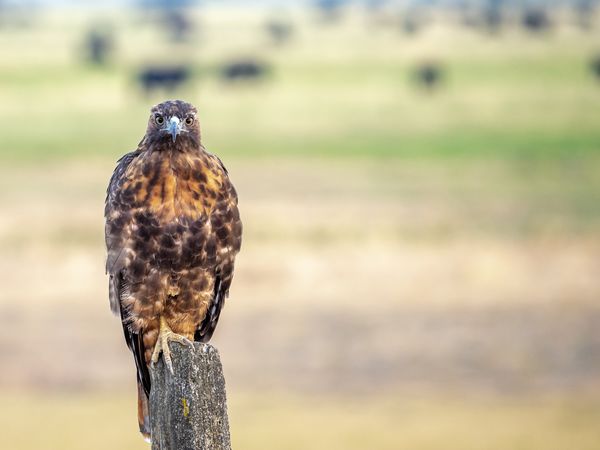Feed back on a Olympus EM1ii
Oct 29, 2018 17:18:08 #
Jeannie88 wrote:
Good Info..thanks.
I sold my 3 full frame Nikons almost 2 years ago, and noticed right away that Fstops were surely different in MFT
I sold my 3 full frame Nikons almost 2 years ago, and noticed right away that Fstops were surely different in MFT
What changed was the focal length of the lens required to get what you were used to on full frame.
f/stops are f/stops, regardless of the sensor format. An f/stop is the focal length of the lens divided by the number of times the entrance aperture fits into it. f/8 on a 50mm lens is always 50/8 or 6.25mm. f/8 on a 100mm lens is 100/8 or 12.5mm. f/8 on a 200mm lens is 200/8 or 25mm. Theoretically, each lens, set to f/8, puts the same amount of light on the sensor. In practice, the actual amount of light transmitted varies a little bit, due to coatings, the number and type of elements in the lens, etc.
You need HALF the focal length on Micro 4/3 to get the same field of view from the same camera-to-subject distance you have on full frame. OR, you need to use the same focal length and back up twice as far! But moving the camera changes perspective... Most people don't do that. They shorten the focal length.
Depth of field becomes roughly twice as deep at a given aperture when you cut the focal length in half, due to the 2X magnification factor. Micro 4/3 sensors are half the diagonal width of a full frame sensor, and 1/4 the area (roughly). So...
You need to open up two stops for the same depth of field on Micro 4/3 that you had at the same distance and double the focal length on full frame. Lenses with wide apertures get expensive, but there are some. Opening up has the added benefit of compensating for the increased noise you would have otherwise on Micro 4/3... You can use an ISO two stops slower when the aperture is two stops wider. OR, you can use a faster shutter speed, or some combination of ISO and shutter speed.
Oct 29, 2018 17:54:40 #
Oct 29, 2018 18:10:40 #
Not the EM1 Mk II but from the EM5 Mk II.
Straight out of camera.
Aperture priority with -1.00 ev dialed in
ISO 1600 with the 40-150 f/2.8 af f/4.
Hand held at 1/50th at 85mm- speaks well of the in-body stabilization.
(Rule of thumb says I should go no lower than 1/160th.)
I suspect the EM-1 MK II would be better.
It's a quiet camera, but given the instrument being played, silence is not necessary....at all.
Straight out of camera.
Aperture priority with -1.00 ev dialed in
ISO 1600 with the 40-150 f/2.8 af f/4.
Hand held at 1/50th at 85mm- speaks well of the in-body stabilization.
(Rule of thumb says I should go no lower than 1/160th.)
I suspect the EM-1 MK II would be better.
It's a quiet camera, but given the instrument being played, silence is not necessary....at all.
Oct 29, 2018 18:24:57 #
latebloomer
Loc: Topeka, KS
JimRPhoto wrote:
I have two other Olympus camera bodies with 4/3. ... (show quote)
I have an Olympus Pen F. I love it. I also don't take pictures at athletic events. It is the best travel camera I have had. I also have another Olympus 4/3 and a Nikon D500 with a new Tamron 24-70 F2.8 lens and other lenses. The D500 is an outstanding camera. Yet, I am tempted to take the Pen F because it is so light and the lenses are vert good.
Oct 29, 2018 18:37:47 #
I will throw in my 2 cents as a long time Olympus shooter and owner of both the EM1 and the EM1 II.
The mark II is a big improvement over the EM1 in several ways - better noise control, quieter shutter, and has 2 SD card slots.
In either case, pay for the good glass. I have the F2.8 12-40MM, the 2.8 40-150MM, the F2.8 7-14MM, and the F1.5 45MM lenses and love them all.
Need shallow depth of field? The faster glass helps, but with the crop factor, F2.8 is not the same on the Olympus as on a full frame (not as shallow).
Solution? Use a longer lens and get further back. You can get great portraits with the 12-40, better with the 45, and really control the DOF with the 40 to 150.
Shooting lots of landscapes? The DOF challenge is in your favor here since you can use a larger aperture and higher shutter speed (don't ask me to get technical,
but think of how much more depth of field you get with a small sensor phone camera compared to a full frame).
The lightness is definitely good, but good glass weighs more no matter what, so if you have been shooting a Rebel kit with kit lens and you move up to what I have, you might not notice
the lighter factor. However, comparing the EM1 II to a higher end DSLR with quality glass, you will not be disappointed.
You can check out some shots I have made at www.RonD-Photography.SmugMug.com - all photos were shot with Olympus cameras (E330, E620, PM1, EM1, EM10, and EM1 II).
On my wall I have 24"X30" (approx) photos from each camera and am happy with all of them.
The mark II is a big improvement over the EM1 in several ways - better noise control, quieter shutter, and has 2 SD card slots.
In either case, pay for the good glass. I have the F2.8 12-40MM, the 2.8 40-150MM, the F2.8 7-14MM, and the F1.5 45MM lenses and love them all.
Need shallow depth of field? The faster glass helps, but with the crop factor, F2.8 is not the same on the Olympus as on a full frame (not as shallow).
Solution? Use a longer lens and get further back. You can get great portraits with the 12-40, better with the 45, and really control the DOF with the 40 to 150.
Shooting lots of landscapes? The DOF challenge is in your favor here since you can use a larger aperture and higher shutter speed (don't ask me to get technical,
but think of how much more depth of field you get with a small sensor phone camera compared to a full frame).
The lightness is definitely good, but good glass weighs more no matter what, so if you have been shooting a Rebel kit with kit lens and you move up to what I have, you might not notice
the lighter factor. However, comparing the EM1 II to a higher end DSLR with quality glass, you will not be disappointed.
You can check out some shots I have made at www.RonD-Photography.SmugMug.com - all photos were shot with Olympus cameras (E330, E620, PM1, EM1, EM10, and EM1 II).
On my wall I have 24"X30" (approx) photos from each camera and am happy with all of them.
Oct 29, 2018 19:25:09 #
burkphoto wrote:
What changed was the focal length of the lens requ... (show quote)
With the right lenses, you can get pretty shallow DOF
Oct 29, 2018 20:08:42 #
tdekany wrote:
With the right lenses, you can get pretty shallow DOF
There are several Voigtländer f0.95 primes in Micro 4/3 mount... Filmmakers love them! They are amazing. Manual focus, no in-lens stabilizers, but tack sharp and fast.
Oct 29, 2018 20:46:06 #
burkphoto wrote:
What changed was the focal length of the lens requ... (show quote)
Well written and informative - thank you!
Oct 29, 2018 20:59:08 #
Shopperon wrote:
Looking to purchase a Olympus EM1ii and want some feed back
as to how affective is a 4/thirds system?
Thanks
as to how affective is a 4/thirds system?
Thanks
I cannot recommend the Mk11 more highly - blindingly fast accurate autofocus, world class in-camera image stabilisation - I won't bang on as I'm sure you've checked
as I'm getting on (in age) I sold my D1 and half a ton of lenses about 5 years ago and bought an an Olympus EM-5 with a couple of cheap lenses. Moved to an EM-1 after two years, with better lenses and finally a couple of months ago took the leap to an EM-1 Mk 11. You are really spoilt for choice with lenses and can use older four thirds lenses with a simple adapter and full functionality. After a lot of trial and error I have settled on three lenses for my travels.
12 - 40 2.8 pro (olympus) around $700 new
40 - 150 2.8 pro with 1.4 teleconverter (Olympus) around $1400 new
25 1.4 Summilux Leica around $600 new
all of three which together cost less and weigh not much more than one Canon EF 70-200MM f/2.8
All of my three lenses highly rated on DXO and I am very pleased with results.
The Olympus menus and buttons take a lot of getting used to - after 5 years I still find things I didn't know existed.
Performance is brilliant, not so hot in very low light situations but that is the tradeoff for losing a lot of weight. I won't go into all the benefits - you can check it out on any photo mag page.
I couldn't be happier and attach a couple of pics I took on a recent trip to Uganda with the Mk11 and two 2.8 pro lenses and one pic of a dragon taken wth the lttle Leica 1.4
Australian Water Dragon

(Download)
Uganda tree living lioness 40 - 150 +1.4 teleconverter at full stretch, hand held

(Download)

(Download)
Oct 30, 2018 02:06:57 #
wdross
Loc: Castle Rock, Colorado
GoofyNewfie wrote:
Not the EM1 Mk II but from the EM5 Mk II.
Straight out of camera.
Aperture priority with -1.00 ev dialed in
ISO 1600 with the 40-150 f/2.8 af f/4.
Hand held at 1/50th at 85mm- speaks well of the in-body stabilization.
(Rule of thumb says I should go no lower than 1/160th.)
I suspect the EM-1 MK II would be better.
It's a quiet camera, but given the instrument being played, silence is not necessary....at all.
Straight out of camera.
Aperture priority with -1.00 ev dialed in
ISO 1600 with the 40-150 f/2.8 af f/4.
Hand held at 1/50th at 85mm- speaks well of the in-body stabilization.
(Rule of thumb says I should go no lower than 1/160th.)
I suspect the EM-1 MK II would be better.
It's a quiet camera, but given the instrument being played, silence is not necessary....at all.
Love the shot. Not an unexpected result for an straight out of the camera shot.
Oct 30, 2018 04:16:59 #
wdross
Loc: Castle Rock, Colorado
Shopperon wrote:
Looking to purchase a Olympus EM1ii and want some feed back
as to how affective is a 4/thirds system?
Thanks
as to how affective is a 4/thirds system?
Thanks
And remember, Burkphoto is right that there is another source of 4/3rds cameras. Even if you buy an Olympus today, and see a future Panasonic body in the future you want, you lose no lenses by buying the Panasonic body. And vice versa. I will still recomend the Olympus design over the Panasonic design unless you do a fair amount of video. Then the Panasonic design may hold an advantage for you. And there are some UHHs that actually have both Olympus and Panasonic bodies with Olympus and Panasonic lenses. How can the 4/3rds system get better than that.
Oct 30, 2018 08:44:31 #
burkphoto wrote:
What changed was the focal length of the lens requ... (show quote)
Hello
Thank you for taking the time to explain that
and really there is a lot to digest in it,
I will reread it several times to retain it all
Ron
Oct 30, 2018 08:48:28 #
GoofyNewfie wrote:
Not the EM1 Mk II but from the EM5 Mk II.
Straight out of camera.
Aperture priority with -1.00 ev dialed in
ISO 1600 with the 40-150 f/2.8 af f/4.
Hand held at 1/50th at 85mm- speaks well of the in-body stabilization.
(Rule of thumb says I should go no lower than 1/160th.)
I suspect the EM-1 MK II would be better.
It's a quiet camera, but given the instrument being played, silence is not necessary....at all.
Straight out of camera.
Aperture priority with -1.00 ev dialed in
ISO 1600 with the 40-150 f/2.8 af f/4.
Hand held at 1/50th at 85mm- speaks well of the in-body stabilization.
(Rule of thumb says I should go no lower than 1/160th.)
I suspect the EM-1 MK II would be better.
It's a quiet camera, but given the instrument being played, silence is not necessary....at all.
Its becoming clear that this camera does rewrite some of
the fundamentals of full frame shooting
Thanks
Oct 30, 2018 08:53:00 #
rond-photography wrote:
I will throw in my 2 cents as a long time Olympus ... (show quote)
Your 2 cents is a lot more than 2 cents. I looked at your photos and they
are well taken. I will consider all you have told me and use them in my decision
Thanks
Oct 30, 2018 08:53:50 #
If you want to reply, then register here. Registration is free and your account is created instantly, so you can post right away.





